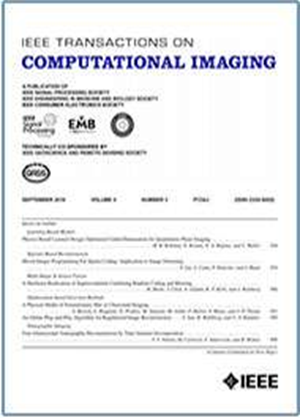Analysis of Deep Image Prior and Exploiting Self-Guidance for Image Reconstruction
IF 4.8
2区 计算机科学
Q2 ENGINEERING, ELECTRICAL & ELECTRONIC
引用次数: 0
Abstract
The ability of deep image prior (DIP) to recover high-quality images from incomplete or corrupted measurements has made it popular in inverse problems in image restoration and medical imaging, including magnetic resonance imaging (MRI). However, conventional DIP suffers from severe overfitting and spectral bias effects. In this work, we first provide an analysis of how DIP recovers information from undersampled imaging measurements by analyzing the training dynamics of the underlying networks in the kernel regime for different architectures. This study sheds light on important underlying properties for DIP-based recovery. Current research suggests that incorporating a reference image as network input can enhance DIP's performance in image reconstruction compared to using random inputs. However, obtaining suitable reference images requires supervision and raises practical difficulties. In an attempt to overcome this obstacle, we further introduce a self-driven reconstruction process that concurrently optimizes both the network weights and the input while eliminating the need for training data. Our method incorporates a novel denoiser regularization term which enables robust and stable joint estimation of both the network input and reconstructed image. We demonstrate that our self-guided method surpasses both the original DIP and modern supervised methods in terms of MR image reconstruction performance and outperforms previous DIP-based schemes for image inpainting.深度图像先验分析及自导引在图像重建中的应用
深度图像先验(DIP)从不完整或损坏的测量中恢复高质量图像的能力使其在图像恢复和医学成像(包括磁共振成像(MRI))的逆问题中受到欢迎。然而,传统的DIP存在严重的过拟合和光谱偏差效应。在这项工作中,我们首先分析了DIP如何通过分析不同架构的内核体系中底层网络的训练动态,从欠采样成像测量中恢复信息。这项研究揭示了dip采油的重要潜在特性。目前的研究表明,与使用随机输入相比,将参考图像作为网络输入可以提高DIP在图像重建中的性能。然而,获得合适的参考图像需要监督,并提出了实际困难。为了克服这一障碍,我们进一步引入了一个自驱动重建过程,该过程同时优化了网络权重和输入,同时消除了对训练数据的需求。我们的方法包含了一种新的去噪正则化项,可以对网络输入和重建图像进行鲁棒和稳定的联合估计。我们证明了我们的自引导方法在MR图像重建性能方面超越了原始DIP和现代监督方法,并且优于先前基于DIP的图像绘制方案。
本文章由计算机程序翻译,如有差异,请以英文原文为准。
求助全文
约1分钟内获得全文
求助全文
来源期刊

IEEE Transactions on Computational Imaging
Mathematics-Computational Mathematics
CiteScore
8.20
自引率
7.40%
发文量
59
期刊介绍:
The IEEE Transactions on Computational Imaging will publish articles where computation plays an integral role in the image formation process. Papers will cover all areas of computational imaging ranging from fundamental theoretical methods to the latest innovative computational imaging system designs. Topics of interest will include advanced algorithms and mathematical techniques, model-based data inversion, methods for image and signal recovery from sparse and incomplete data, techniques for non-traditional sensing of image data, methods for dynamic information acquisition and extraction from imaging sensors, software and hardware for efficient computation in imaging systems, and highly novel imaging system design.
 求助内容:
求助内容: 应助结果提醒方式:
应助结果提醒方式:


